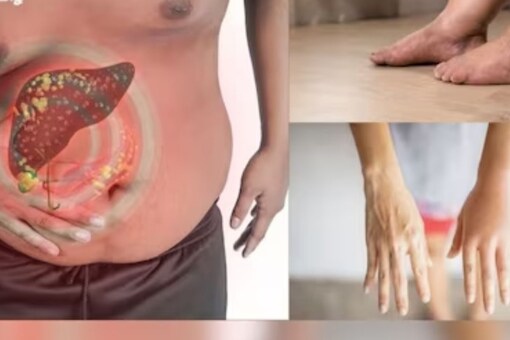A fatty liver develops when an excess amount of fat accumulates in the liver. In its initial stages, it typically poses a minor health concern and can be effectively managed. But if the condition worsens, it may trigger liver inflammation, liver damage and the replacement of healthy liver tissue with scar tissue. This advanced stage is known as liver cirrhosis and can eventually lead to liver failure or the potential development of liver cancer. Take a look at the signs of fatty liver disease below.
Abdomen (Ascites)
Advanced liver disease triggers a condition known as ascites, which involves the buildup of fluid in the abdomen. This problem becomes more pronounced in severe instances of non-alcoholic fatty liver disease (NASH) or advanced alcoholic fatty liver disease. The inflammation and scarring lead to a condition called portal hypertension, where there’s increased pressure in the liver’s blood vessels.
Legs and Ankles (Edema)
Liver damage caused by fatty liver disease can result in a condition known as portal hypertension. Portal hypertension is marked by higher pressure within the portal vein, responsible for carrying blood from the intestines and other organs to the liver. This elevated pressure can cause fluid to build up in nearby tissues, resulting in swelling in the legs and ankles, a condition known as Edema.
Chest and Breasts
Severe fatty liver disease in males can cause gynecomastia, which is the enlargement of breast tissue. This enlargement is a result of hormonal imbalances linked to liver dysfunction and may also be connected to a decrease in sexual desire and infertility.
Hands
Advanced fatty liver disease and liver dysfunction associated with portal hypertension result in puffiness and swelling of hands.
Feet
In severe cases of fatty liver disease, Edema can extend beyond swelling in the legs and ankles and also affect the feet.
Detecting fatty liver disease early and undergoing proper treatment is important. Your doctor may suggest lifestyle changes such as maintaining a healthy diet, regular exercise and avoiding alcohol.
It’s crucial to emphasise that once fatty liver has reached its advanced stage, it cannot be fully cured. Nevertheless, following your doctor’s guidance can be an effective way of treating the condition.


